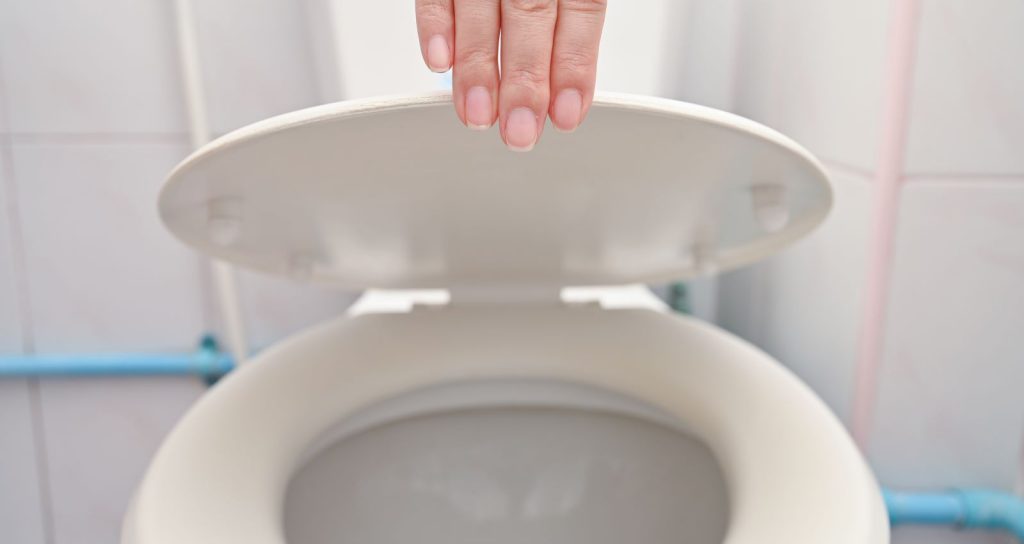Ah, the universal plumbing problem … the clogged toilet. Dreaded by parents, feared by children.
Fear not! These expert plumbing tips will help you to unclog even the most stubborn of toilet clogs.
Our Hero: The Flange Plunger
The best way to unclog a toilet is to use a flange plunger.
Properly.
Flange plungers are specifically designed to clear toilet clogs. Using a flange plunger, create a snug seal with both the flange and cup, then plunge continuously for about twenty seconds. When you plunge a toilet, you insert this flange directly into the toilet bowl’s drain hole. This ensures a tighter seal than a conventional cup plunger could achieve and directs the suction generated by plunging directly into the drain below to unclog toilets more effectively.
When you plunge your toilet, make sure you’ve folded out (or extended) the flange from the cup before you get started.
Prepare The Area Around The Toilet
Plunging can get messy. Put on rubber gloves and lay out towels or plastic wrap to catch spills. Move anything that you could knock over while working out of the way. We also recommend wearing boots or other gripping footwear to help you maintain good footing while you’re plunging away.
Level Out The Amount Of Water In The Bowl
To maximize plunging effectiveness, you’ll want to fill the toilet bowl about halfway full with water (enough so that you can fully submerge the plunger cup). Use a cup or bucket to bail out or add hot water as necessary until the bowl is half full.
Place The Flange Into The Toilet Drain
Maneuver the flange until it fits snugly into the top of the toilet bowl’s drain. Insert the flange at an angle so the flap fills with water as you lower it. This will help increase suction and improve the plunge. After inserting the flange successfully, straighten the plunger again.
Fit The Cup Over The Drain
Plunger cup fitting over toilet bowl drain.
Make sure you’ve submerged the entire plunger head in water. Fit the cup of the plunger snugly over the drain while keeping the flange inserted. As you create the seal, let water from the bowl under the cup. The water between the cup and the drain will help generate suction pressure to unclog.
Position And “test” Your Plunger Seal
When you’ve created a seal with both the flange and cup, “test” it before getting started. Depress the plunger straight down and then tug it back up the way you would to unclog normally, but do so slowly. Make sure the seal stays in place throughout the process.
(optional) Apply Petroleum Jelly Around The Cup Of The Plunger
If you are having trouble maintaining a seal, try applying petroleum jelly to the cup. Petroleum jelly will help keep the cup from sliding off of the bottom of the bowl. Give this a shot if you keep failing the seal “test” in step
Plunge Forcefully 5 To 6 Times
Push down on the plunger forcefully to drive the cup down and drive the flange into the drain, then pull the cup back up to “reset.” Make sure you maintain the seal at all times! Repeat this motion repeatedly and steadily, but not too forcefully or rapidly, for 20 seconds.
Check Water Level In Toilet Bowl
After plunging for thirty seconds, quickly break the seal and remove the plunger. Listen for a gurgling sound from the drain (a good sign) and check the water level in the toilet bowl. If nearly all the water drained from the bowl, then you’ve probably cleared the clog.
Test To See If The Clog Is Cleared
Before you test your flush, remove the tank lid. Depress the handle as usual and watch the toilet bowl closely. If you haven’t cleared the clog, then the toilet won’t flush and the bowl will start filling with water. Prevent an overflow by manually closing the toilet’s flapper.
If you’ve cleared the clog, then your toilet will flush normally when you test it. Good work! If you have to stop an overflow, then it’s time to repeat the process again. Don’t get discouraged if your plunging doesn’t work at first; some clogs take longer than others.
We recommend you only re-try plunging up to five times. Plunging for too long could damage your toilet, and some clogs are too stubborn for even the most effective plumbing. If you’re dealing with such a clog, then call one of our plumbing experts. We have yet to meet a clog we couldn’t clear.

